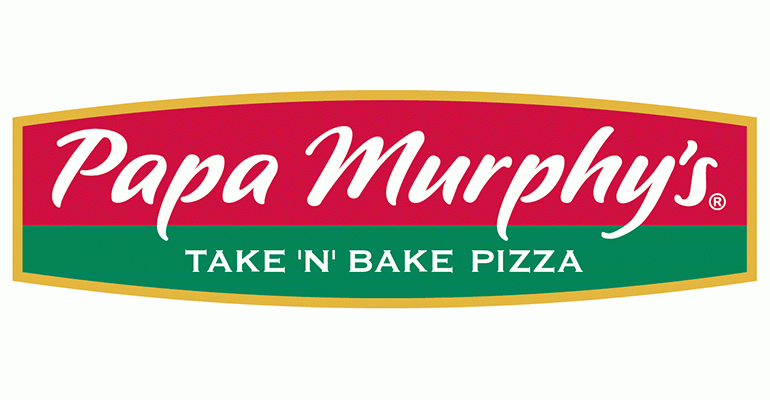Papa Murphy’s Holdings Inc.’s first national ad campaign was a bust.
Same-store sales at the Vancouver, Wash.-based take-and-bake pizza chain fell 5 percent in the first quarter ended April 3, the company said Wednesday, the sixth straight quarterly decline.
While the decline was narrower than in the fourth quarter, when same-store sales fell 7.8 percent, it still was a disappointment since the ads were aimed at helping to reverse the sales slide.
“We thought it would be successful,” interim CEO Jean Birch told Nation’s Restaurant News Wednesday. “We never would have done it if we didn’t. But they didn’t produce the results we would have liked. It didn’t change the trajectory. It improved the trend. But given the costs and the results … it’s not an effective vehicle.”
Several restaurant chains, such as Dunkin’ Donuts and Popeyes Louisiana Kitchen, have used national ads to propel their brands, even in markets where they don’t have locations.
Papa Murphy’s has used local ads to great effect in markets where it is well known, such as in Portland, Ore., and Seattle. The company hoped the national campaign would boost frontier markets where it has fewer locations and is less known.

Papa Murphy's first national ad campaign targeted busy moms.
Birch said the ads had the most benefit in frontier markets, but were not as effective elsewhere.
“They didn’t pay the bill,” she said. “And in the entire Northeast, we have no store locations, so we advertised to a lot of eyeballs that didn’t make a purchase.”
In short, Birch said it’s too early for Papa Murphy’s to do national ads. Plus, with the effectiveness of television ads expected to diminish over time, “I don’t know if we’ll ever have national television,” she said.
But executives know they have to return sales to a positive direction. First-quarter revenue declined 3 percent, to $32 million. The company reported a net loss of $5.4 million, or 32 cents per share, down from a $642,000 profit in the same period a year ago.
Much of the loss, or $6.3 million, came from costs associated with company restructuring. Papa Murphy’s announced cuts to corporate staff, including some executives, in February.
The company’s stock, which at one point in 2015 was trading above $21 per share, has hovered between $4 and $5 per share all year.
Papa Murphy’s plans to shift advertising back to local television in mature markets and local-store marketing involving franchisees.
The company is also working to improve innovation to get more customers in the door, Birch said.
“Over time, our product innovation pipeline has gone a bit dry,” she said. “We’ve reignited that. New news is an important piece of any consumer brand, particularly for us.”
For instance, Papa Murphy’s is testing an XLNY, or an extra-large New York pizza.
“We’re pleased with the results on that,” Birch said.
But the company needs to market itself differently, she said, in order to get its point of differentiation across. Papa Murphy’s is unique because as a take-and-bake chain, consumers cook the pizzas at home.
“We don’t have a direct competitor,” Birch said. “Other big pizza companies are dramatically different. We need to market differently than they do.”
Papa Murphy’s had “very encouraging” early results of a delivery test with Amazon in Seattle, she said. The company is in talks with other delivery providers and wants to expand the service.
“It’s a little early,” Birch said, adding, “We used to call it a test. Now it seems less like a test and more like a focused launch.”
“There are implications for our brand,” she said. “There’s demand, and there’s upside for our brand.”
Papa Murphy’s is also working on its relationship with franchisees, Birch said, which has been strained recently, especially given the sales slide.
Birch said operators didn’t think the company always communicated well. Papa Murphy’s met with franchisees in eight markets and spoke with influential operators over the phone to work on franchise relations, she said.
“If we behave as a good franchisor, franchisees will respond well and be successful,” Birch said.
That’s important for a brand that wants to rely more on franchisees in the future. Franchisees operated 1,398 of the chain’s 1,566 total locations, as of April 3, an increase of 11 restaurants over the past year.
Papa Murphy’s wants to reduce the number of company-owned locations, currently at 168 units, to about 50 restaurants by selling them to franchisees. The company plans to sell at least 15 units to franchisees this year, mostly to existing operators.
But refranchising is affecting operators’ willingness to build new locations. The company reduced expectations for new unit openings this year to between 60 and 75 locations, from previous guidance of around 75 new units.
Contact Jonathan Maze at [email protected]
Follow him on Twitter: @jonathanmaze





